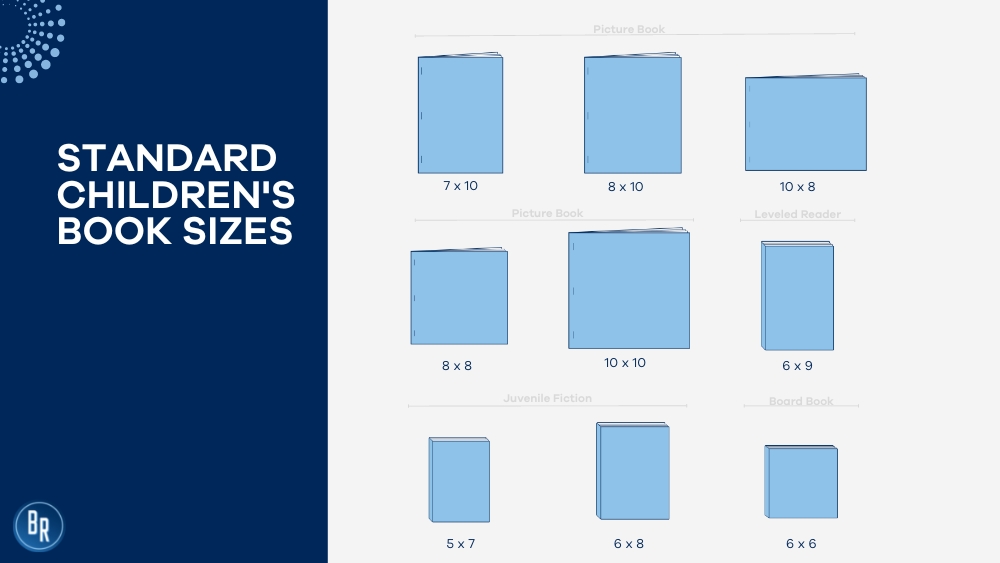Standard Children’s Book Sizes: A Publishers Guide
What size should a children’s book be? Publishers, book printers, and authors understand that choosing the size of a children’s book can be a challenge. At BR Printers, we have seen every trim size you could imagine and we’re here to teach you about standard childrens book sizes so you can make informed decisions for your upcoming bestsellers!
Want to share the children’s book sizes with others? Download and share this document!
What is Trim Size?
Trim size is the dimension of a book’s pages. Depending on the book binding type, a book cover size might be the same dimensions as the trim size or larger. During book production, book pages are printed then the edges are trimmed so each page is completely even. Not sure what paper type to choose for your book? Learn more about paper types in our recent post!
Trim size is a spec that has a big impact on the utility of the book as well as its price. Printing experts like us guide and educate publishers about the most efficient trim size, so we can help them reduce costs for 1st printings and reprints across the life cycle of the book.
Choosing a Trim Size? Consider This…
The three major factors to consider when choosing a book size are appearance, budget, and time.
Appearance matters when printing children’s books because it impacts the cover size, book format, illustration of each page, and overall book design. Susan Ginch, NGS VP of Sales East Coast and childrens book printing expert, says that publishers also keep appearance in mind when choosing trim sizes because they want their books to “stand apart from the competition,” and “best serve the reader of the book”. For example, the book design for a board book is typically smaller than a leveled reader so young children can hold the book easier.
Budget
Small differences in trim size may impact price greatly. Non-standard book sizes are significantly more expensive than standard book sizes. While a unique book size could make your book stand out on a shelf, it might not be the best choice for your budget.
Time
A non-standard book size can be a creative decision for publishers and book writers but if you’re on a tight schedule it’s important to know that “non-standard trim sizes could be subject to longer scheduling considerations” according to Ginch.
What are the Popular Children’s Book Sizes?
Unlike typical trade and education books, children’s books come in a variety of different sizes. While there are many unique sizes to choose from, there are common book size measurements that printers recommend. Below are some of the most common sizes for children’s books based on genre. Each common book size is measured as width by height in inches. .
Picture book: 7 x 10, 8 x 10, 10 x 8, 8 x 8, 10×10
Leveled readers: 6 x 9
Juvenile Fiction: 5 x 7, 6 x 8
Board Books: 6 x 6

 Why Printers Recommend Standardizing Trim Sizes
Why Printers Recommend Standardizing Trim Sizes
Recently, printers have been recommending that publishers and authors standardize their trim sizes, but why? Steve Duvanich, BR Director of Enterprise Sales, says that it is, “easier for you to plan further ahead if you have standardized trims and standardized paper usage”. The future of children’s book publishing is changing “as paper manufacturers begin to limit their roll sizes to the most standard,” says Susan Ginch which may have an impact on, “trim size options that printers offer over the long term”. A standard book size will save not only save you a headache but money and time.
Go Above & Beyond Ink, Print With BR
BR Printers is trusted by many of the nation’s largest education and trade publishers. When you partner with BR Printers, you’re receiving high-quality book printing and guidance from our industry experts. We are committed to putting our customer’s needs above all else. How can we help you? Contact BR Printers today.
